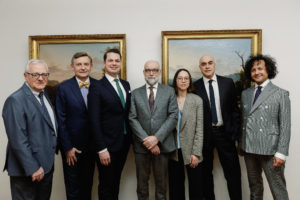As intellectual capital and more precisely intellectual property (IP) and intellectual property rights (IPRs) play an increasingly important role in corporate strategy , the accurate valuation of IP remains a major obstacle to their emergence as a tradable asset class. Though there are several generally accepted ways to measure the value of IC/IP, the introduction of more transparency in IP valuation procedures may render the trading of IP rights significantly more efficient and profitable which can be used in legal cases.
Recently the European Commission (EC) appointed panel of European IP valuation experts drawn from a range of disciplines including those involved with accounting, business valuation, IP consulting, litigation and damage award activities.
The panel’s task was to consider how IP valuation plays a part in the policy for the “Innovation Union” and the bottlenecks that occur. This Expert Group focused on valuation methods for IP and their use; to identify bottle necks in the valuation methods used for the purpose of a company’s financial reporting, access to finance and litigation; to identify good practices; and to recommend possible policy actions. The intangible assets created through the processes of innovation represent a major share of the value of today’s businesses. The IP rights associated with those assets are the legal underpinning for potential returns on investment in that innovation. Despite their fundamental importance, the understanding of IC/IP and IP rights does however differ widely amongst businesses large and small.
There is a clear need to increase market actors’ confidence and certainty in IC/IP valuation methods as a way to stimulate IC/IP transactions, to support IC/IP based financing and to give companies the tools to provide information about their IC/IP. This will also allow investors to better understand the business and the value of the company itself and even to provide decision makers with the required information to decide whether to enforce or to license IC/IP.
However, the Expert Group has demonstrated that it is not the lack of valuation methods per se, or even standards for valuing IP that are missing, but rather other barriers that are having a greater influence on business and lenders. As IP is, by its nature, innovative and therefore different, each case for valuation requires investigation, rather than having an automated approach to IP valuation. As a result, IP valuation of a company’s assets is an opinion, at a particular point in time – similar in many respects to the way that a legal opinion is given.
Although an informed layman might proffer a good guess, it is important to note that in the same way that one cannot automate the judgment on a law suit, one cannot automate judgment on an independent IP valuation. There are many factors involved and evidence and purpose can have a large impact.
The valuation of IP assets is a challenge but , new measuring systems and accounting systems are entering the business scene and will contribute to decisions when IP is protected by rights such as patents and trademarks, where a requisite for obtaining such rights is that the IP starts to exist. Valuation involves assumptions and judgment by the valuer derived from and justified based on a bespoke, rigorous analysis of the IP within its business context, together with its importance versus
The bottleneck for the improvement of an IP market is not in the lack of accepted methods or standards, their content or consistency, but in the limited dissemination of the fact that they exist and the little confidence in their results.
This expert group has firstly investigated European best practice in IP valuation as performed by financial institutions that are providing capital, particularly to SMEs. This report presents the results of this research and their approach to IP backed financing – the successes and failures and whether IP valuation is actually carried out as part of the financing process.
The findings of the research carried out are summarized under the headings of equity financing and debt financing and some examples of current practice are provided. We note that there is a significant difference in the approach to lending to SMEs and start-ups compared with larger corporate that have a strong trading history. A solution is needed to fund the commercialization of innovative ideas, with the value of the IP asset acting as collateral.
Overcoming the barriers to lending against IP assets is therefore attractive at a national and European Level.
It must be noted that cases of intangible asset based lending (IABL) have occurred in certain circumstances. Combined asset based lending has been achieved whereby a bank provides a loan to a pension fund against tangible assets and the pension fund then provides a sale and lease-back arrangement against intangible assets. IABL from pension funds (on a sale and lease back arrangement) rather than banks, provides a route for SMEs to obtain loans that is gaining increasing attention. One reason given for this uptake in IABL between a company and director pension funds is the growing number of SMEs who have difficulties in securing bank loans.
In the Accounting and Reporting section the Expert Group reports that there are limitations on when and how it is possible to place the value of IP assets on the balance sheet of the company. The complexity of IP from an accounting perspective leads to problems in its reporting, which may result in the vulnerability of firms which base most of their performance on IP. The existing regulatory situation implies that IP will be recognize in more and more cases . In the past historical cost based on a previous acquisition of such IP. It is difficult to recognize internally generated IP as, when the expenditure to develop the IP is incurred, it is usually unclear whether it will generate benefits in the future. As a consequence, an important part of internally generated IP was not recognized in the balance sheet of an enterprise, meaning that potential investors are not receiving some relevant information about the company.
This is changing. The filing of a “management report” together with the annual report, giving detailed information about IP value, seems to be a useful vehicle to improve publicly available information on intangibles. There are now already measure systems and accounting systems available which are in line with the IAS and IFRS accounting standards.
Finally, the Expert Group states that an issue that influences a company’s decision to protect its IP, especially in the case of SMEs, is to what extent such rights are enforceable, the time and costs involved in litigation, and the foreseeable economic results. The quality of the enforcement system has an important impact in IP protection.
SMEs and large companies need to be assured an accessible justice system in case of infringement, validity and other IPR related litigation cases, which implies the need to provide judges and professional valuers with the appropriate tools and data to facilitate valuation in litigation.
As a result of the in-depth analysis carried out in all the mentioned areas, the Expert Group recommends a number of policy actions that could have a significant impact on reducing the identified barriers in order to increase the efficient use of IP valuation and to make such valuation flexible, transparent and reliable to respond to market requirements.
Please read more on: http://bookshop.europa.eu/fr/final-report-from-the-expert-group-onintellectual-property-valuation-pbKI0114460/
ANTEIUS Advocaten – Belgium



